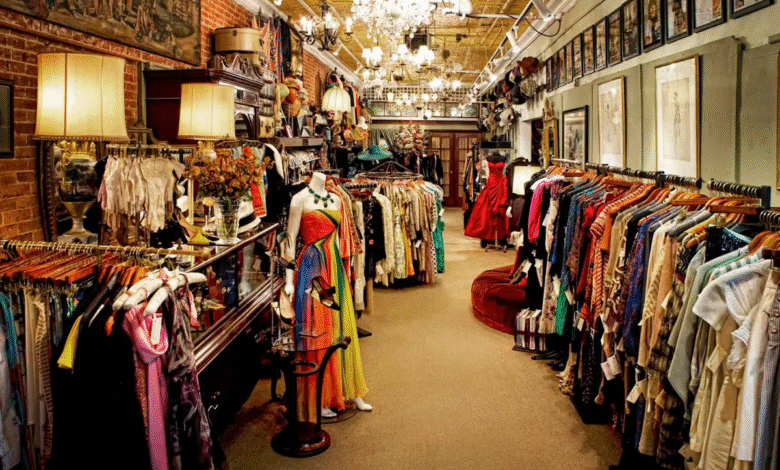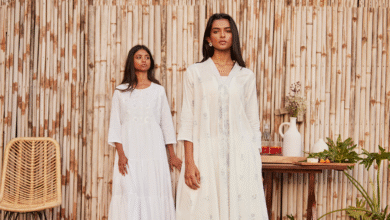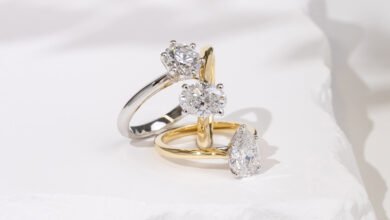Secondhand Chic: The Essential Guide to Thrift Vintage Fashion

Introduction
Thrift vintage fashion is more than a shopping habit it’s a creative, sustainable lifestyle that blends history, individuality, and smart consumer choices. Whether you’re hunting for a 1970s boho dress, a tailored blazer from the 1980s, or simply looking to reduce your environmental footprint, thrifting gives you access to unique pieces that tell a story. The modern resurgence of vintage and secondhand style is driven by a mix of ecological awareness, a desire for original looks, and the thrill of discovery. For many, thrift shopping becomes a hobby and a form of personal expression: layering textures, mixing eras, and repurposing garments in unexpected ways. This guide will walk you through the practical how-to of thrift vintage fashion, help you identify quality pieces, offer styling and care tips, and explain why this niche matters for both your closet and the planet.
Why thrift vintage fashion matters (History, sustainability, and value)
Thrift vintage fashion matters because it connects style to story while cutting waste. Vintage pieces come from different eras, reflecting shifts in materials, cuts, and cultural moments keeping these garments in use preserves textile history. From a sustainability perspective, buying secondhand significantly reduces demand for new production, which means fewer raw materials used, less energy consumed, and reduced greenhouse gas emissions. Economically, thrifting offers high style value for lower monetary cost: you can find well-made, unique garments (often made with superior fabrics or construction) for a fraction of their original price. Socially, thrifting supports local charities and small businesses when purchases are made through nonprofit thrift stores or independent vintage boutiques. On a personal level, collecting vintage sharpens your visual literacy you learn to read labels, fabrics, and construction details and teaches you to build a wardrobe that’s curated, intentional, and distinctive rather than disposable.
How to spot quality vintage and thrift finds
Spotting quality in thrift and vintage garments is a skill you’ll develop with practice and attention to detail. Start by checking the fabric: natural fibers like wool, silk, cotton, and linen typically age better and feel distinct from many cheaper synthetics. Examine seams and stitching neat, tight stitches and finished seam allowances point to better construction. Pay attention to hardware: original zippers, buttons made of natural materials, and sturdy linings add value. Look for maker’s labels or country-of-origin tags; they can help date a piece and indicate manufacturing standards. Smell and inspect for stains, odor, or moth damage, but remember some issues are reversible with professional cleaning or simple repairs. Finally, fit is flexible with vintage: a skilled tailor can adjust many aspects, so prioritize pieces with good bones strong fabric, intentional design lines, and proper proportions that a professional can tailor into a perfect, personal garment.
Styling and building a timeless secondhand wardrobe
Creating a wearable, timeless thrift wardrobe is about balancing uniqueness with versatility. Start with classic foundation pieces a well-cut blazer, a neutral coat, a pair of quality denim, a crisp button-up, and a good pair of shoes then layer in distinctive vintage items for personality. Combining eras can produce an up-to-date silhouette: pair a 1950s skirt with a modern knit, or a 1990s oversized blazer with slim trousers. Tailoring is transformative: small adjustments to sleeve length, hemline, or waist can bring a vintage garment into your everyday life. Focus on color palettes and textures that coordinate so pieces interchange easily. Invest in a few statement accessories (vintage scarves, brooches, belts) to change the mood of an outfit instantly. Remember functionality: opt for pieces that suit your lifestyle and climate so your secondhand wardrobe is both loved and worn often that’s the true mark of sustainable style.
Caring for vintage finds and ethical shopping practices
Proper care extends the life of thrift and vintage garments and preserves their value. Always check labels for cleaning instructions; when in doubt, use gentle methods hand wash or cold machine cycles with mild detergent, and air dry flat to prevent distortion. For delicate silks or structured suits, professional cleaners that specialize in vintage care are worth the investment. Learn basic repairs: sewing on a button, closing a seam, or replacing a zipper can make a treasured item wearable for years. Ethically, prioritize purchases from reputable sellers nonprofits, certified vintage shops, and trusted online vintage sellers and avoid supporting mass-resale operations that exploit labor or resell items unethically. Consider upcycling or swapping with friends to keep garments in circulation. When donating, choose organizations with transparent distribution practices. Caring for your clothes and making responsible choices amplifies the sustainability benefits of thrifting and honors the stories woven into vintage pieces.
Conclusion
Thrift vintage fashion offers a powerful combination of personal expression, environmental responsibility, and economic savvy. By learning to identify quality, investing in tailoring and care, and building a cohesive wardrobe, you can reap the benefits of unique, long-lasting style. Thrifting is not only about scoring a great find it’s about participating in a circular fashion mindset that values repair, reuse, and storytelling. Whether you’re a seasoned vintage collector or new to the secondhand scene, approaching thrift shopping with curiosity and care will reward you with garments that are beautiful, meaningful, and better for the planet.
Frequently Asked Questions (FAQs)
Q1: Is vintage the same as thrift?
A1: Not exactly. “Vintage” typically refers to clothing at least 20 years old and often denotes a particular era or collectible value; “thrift” refers to the act of buying secondhand, which may include vintage, contemporary secondhand, or gently used modern items. Both overlap but have different emphases: vintage emphasizes age and historic style, while thrifting emphasizes the buying channel.
Q2: How can I tell if a vintage item is worth repairing?
A2: Assess repair cost vs. value. If fabric is intact and damage is limited to hems, buttons, or seams, repairs are usually economical. If the fabric has large holes, severe staining, or extensive moth damage, repair may be costly. Consider sentimental or unique value too sometimes a one-of-a-kind piece justifies repair.
Q3: Are there rules for mixing modern and vintage pieces?
A3: There are no strict rules the aim is balance. Pair one standout vintage item with simpler modern basics to keep your look cohesive. Use tailoring, color palettes, and proportion to harmonize pieces from different eras.



